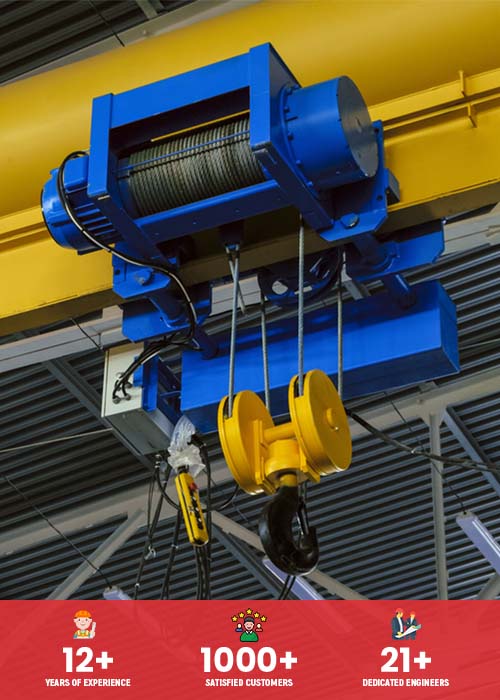What are Jib Cranes? How Many Types of Jib Cranes are There And How They Work?
Manufacturing and storage units need a crane as an essential tool. Depending on the tasks, available space, and amount of weight to lift, various types of cranes are used in buildings. One among the many types of cranes is a jib crane.
The jib crane is supported by a pillar which can be fixed either on the floor or on the wall. The jib rests on the pillar with an attached hoist. The hoist moves in order to move the load up and down as per requirements.
The hoist attached to the jib has a chain or rope. Both the chain and rope hoists work nearly the same. There is a lift wheel or drum with the hoist where the weight is placed and the rope or chain are used to wrap it safely.
The crane can work on electrical or mechanical energy whichever is available. Sometimes, the cranes are also operated manually where the weight is not extremely high. According to the jib crane manufacturers in India, the jib cranes are quite versatile and can fit in various sites.
Let’s know more about the types of jib cranes and how they work.
Types of Jib Cranes
Any crane that has a rotating jib with an attached hoist supported by a vertical pillar can be categorized as a jib crane. Jib cranes are very versatile and can be used in military and commercial ships in addition to construction sites. The floor mounted jib cranes that support themselves are very popular in many industries. The cranes are quite easy to handle and save a lot of time. Let’s understand the working of all jib cranes.
1. Floor-mounted Type
A vertical mast stands on the concrete surface to support the crane. These cranes are also called self supporting jib cranes. The jib rests on the vertical pillar with an attached hoist.
Why these cranes are so [popular is because they make the work easy for other cranes. The hoist can lift and lower much of the weight and that reduces load of other main cranes. The crane is manually operated with a 360 degrees rotation.
2.Wall mounted Type (fixed)
The crane is mounted on the wall horizontally on a RCC column bracket. The mounting offers rotation of upto 200 degrees, but the area near the mounting is well covered. These type of cranes are space saving and can be installed even if there is less floor space available in your organization. The crane offers no obstruction at floor level and that makes it a great fit for compact spaces or where the floor space is occupied or unfit for installation.
3. Wall mounted Type (traveling)
These are similar to the fixed wall mounted cranes with the only difference that these can cover relatively large areas. Since the mounting is not fixed, the crane can cover a lengthwise area in the building. The crane causes no floor obstruction and works great even if there is little or no usable floor space.
As the name traveling crane suggests, the crane moves along specially designed columns fitted in the wall. The crane offers no rotation since it runs along a track formed with columns. The wall mounted traveling crane might not be a great fit if you need the crane to rotate for any task.
The jib cranes are of great help no matter how large or small your manufacturing unit is. The cranes come in a variety of performance levels and you can pick the best one just by following the given link.



